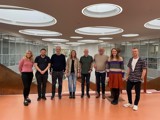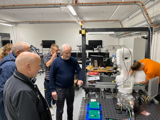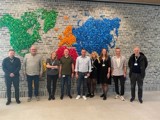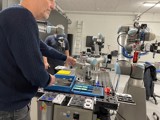Design for Disassembly
Progress September 2023
Design for Disassembly is a small, yet essential experimental study. We have embarked on this journey in the innomission partnership to develop new methods and guidelines to design for a circular economy.
There is an extensive research gap between product design and circular economy. For long we have designed products for a take-make-dispose economy. It is time for a change to design for circularity.
Prolonging lifetime
“Design for Disassembly ”opens to service, repair, and refurbishment to prolong the lifetime of the products. We develop the methods to also capture material recovery to create the circular loop of keeping products and materials in flow for as long as they hold value. Thus, it could be in remanufacturing or in increasing the degree of recyclability.
The project takes its point of departure in a prevention of waste strategy rather than a recycling strategy alone.
Product cases include the Grundfos’ circulator pump, the Danfoss’ drives, and the LEGO® mechatronics.
What we have done so far
Design for disassembly includes developing new methodologies for analysis such as disassembly maps, assessment of the system of fasteners, and the development of end-of-life scenarios about environmental footprinent and circularity of plastic materials, electronic components and potential of reuse components or critical metals.
If we can have cleaner fractions of materials, the potential for recycling plastic materials increases. Furthermore, suppose we can design for repair or design for harvesting critical metals, e.g., rare earth magnets or circuit boards (without compromising safety or product standards). In that case, it potentially becomes cheaper to do ‘urban mining’ from existing products and more likely to happen in safe environments in new value chains when preparing products for a circular economy.
Who can use it?
Methods are in development and testing. Methods and design guidelines must be applied to more products on a larger scale, including ecodata to inform design scenarios.
Industrial manufacturers like this project’s partners Grundfos, Danfoss Drives and the LEGO Group are keen on moving towards more circularity of materials and components - in either a closed or open loop.
That said, one of the project’s impacts lies in creating inspiration and change in mindset in how we design products for Eco effectiveness - that it is possible to use design as a catalyst in preparing products for a circular economy.
Next Step
Our next steps are:
- to move towards a catalogue of design solutions to increase products’ recyclability and implement the concept of design for disassembly in new product development.
- To perform effective disassembly will only be feasible with automation and not manually. Together with SDU Robotic, we have set up a demo in SDU industry 4.0 lab on the LEGO® Group case for testing. The demo builds on the design disassembly maps using robotics for disassembly.
- Evaluate optimisation for robotic disassembly/dismantling.





About the author
Lykke Margot Ricard